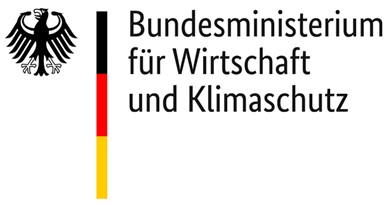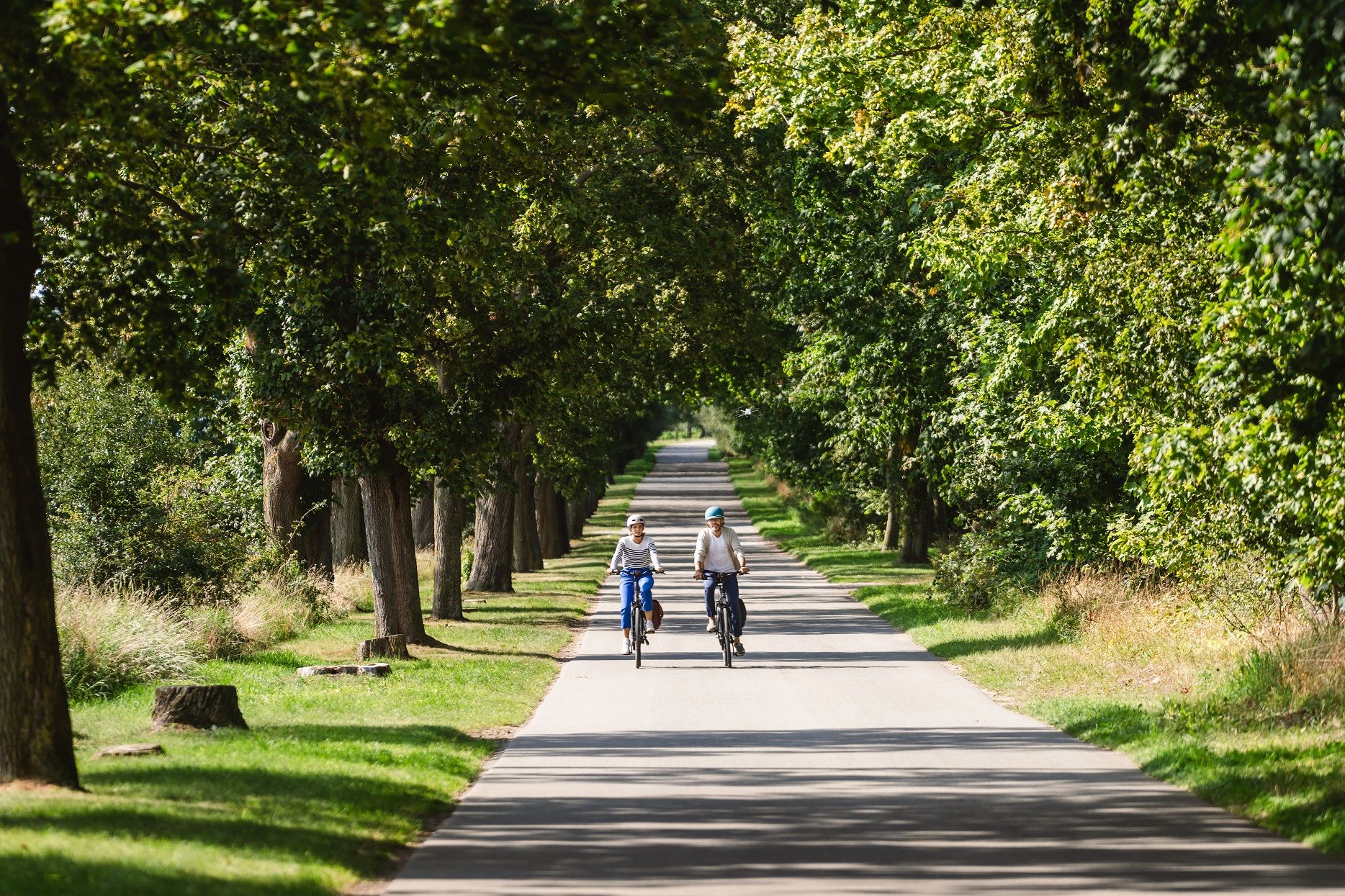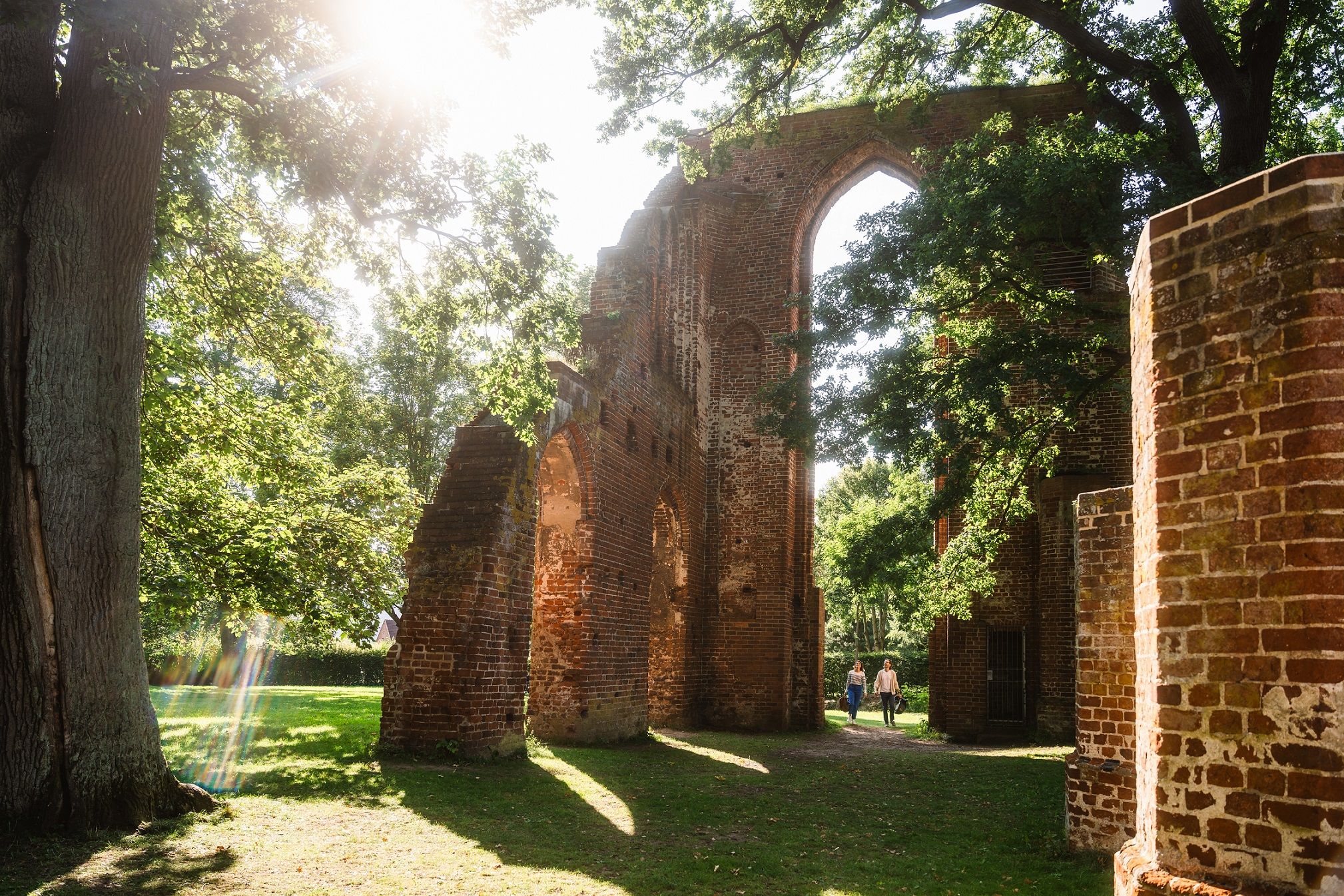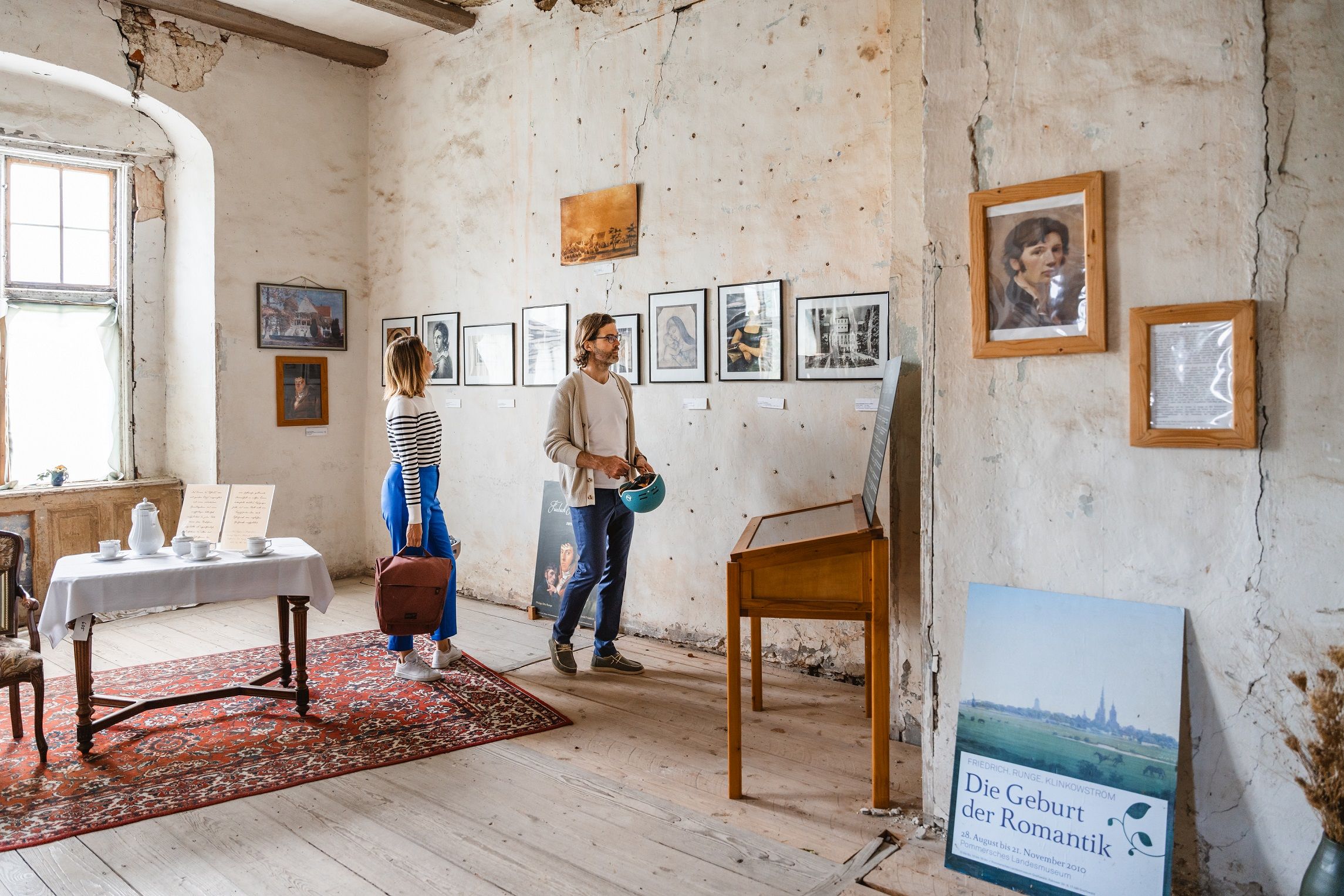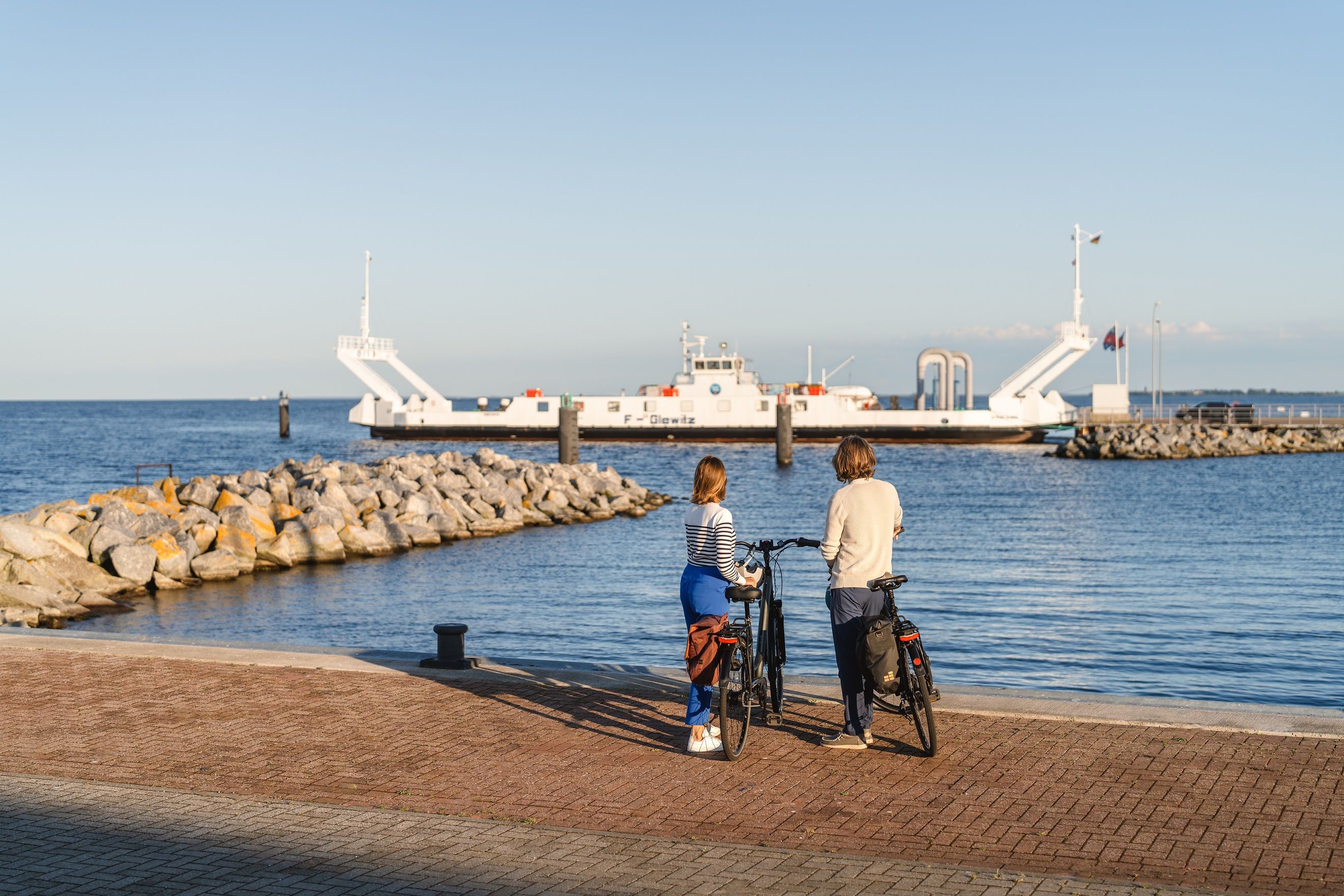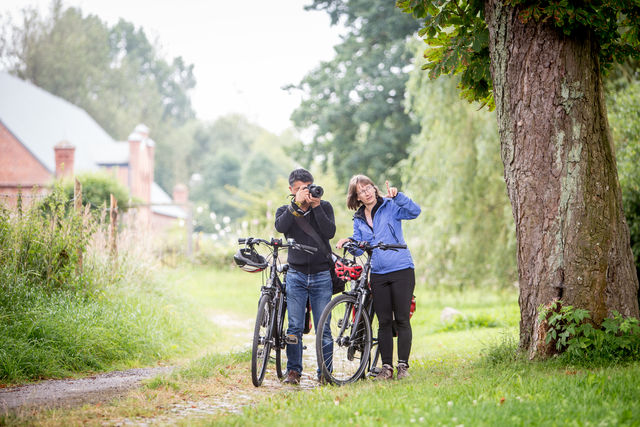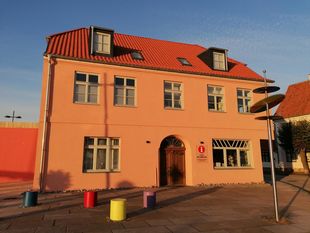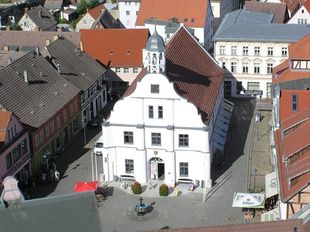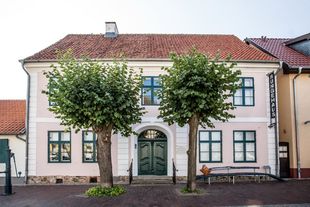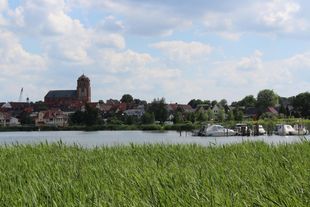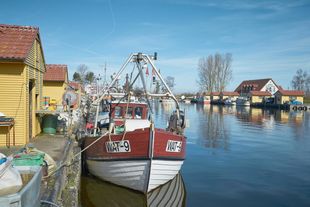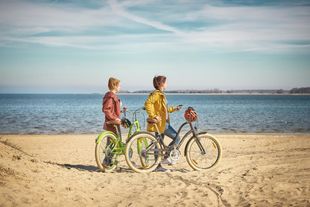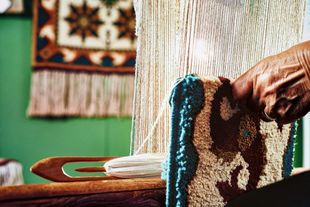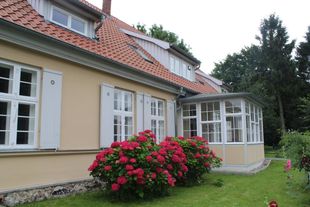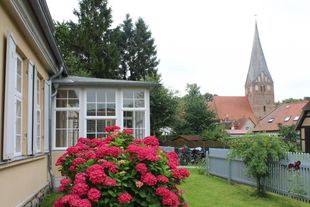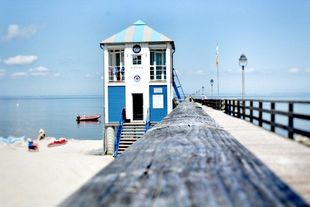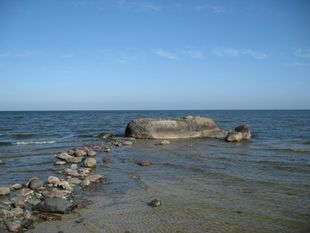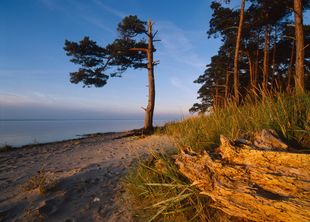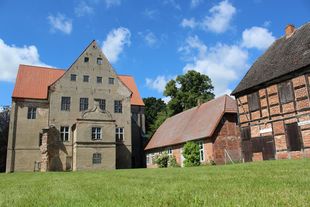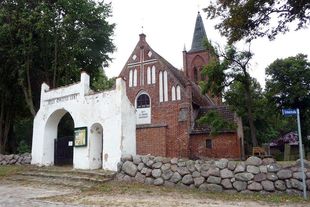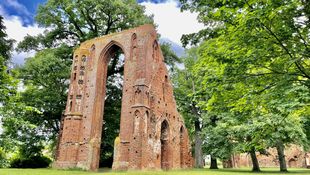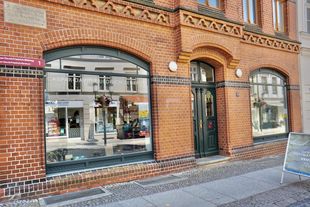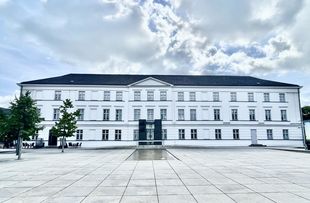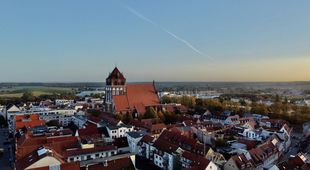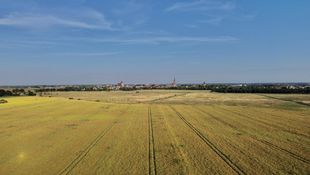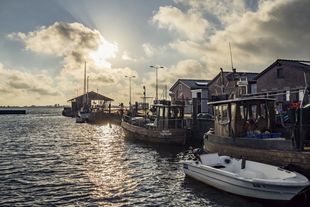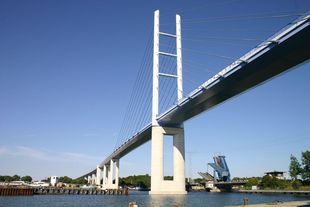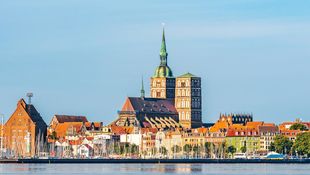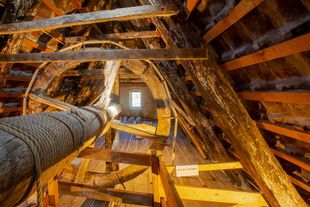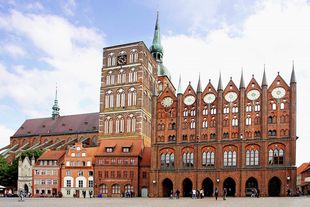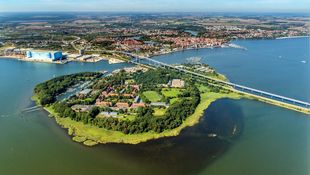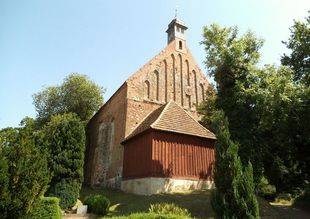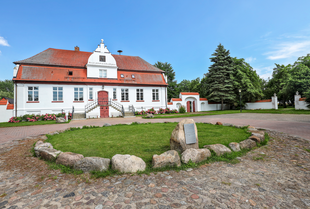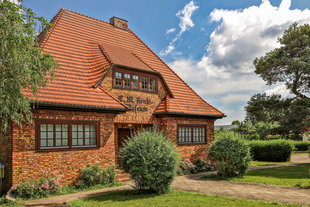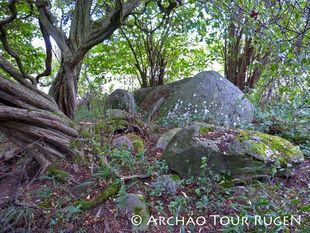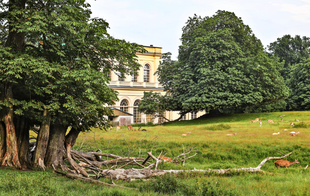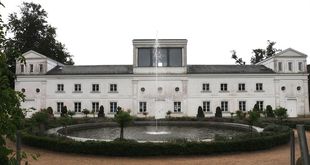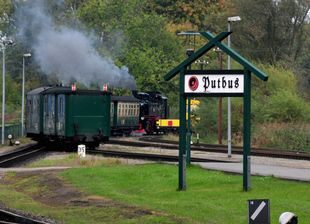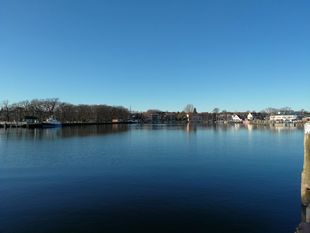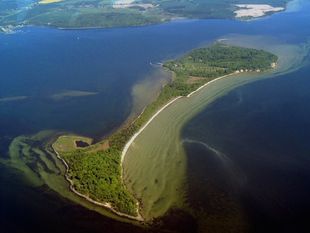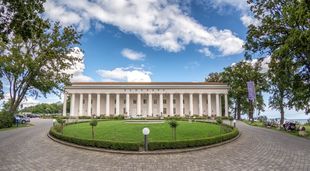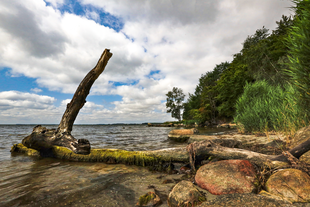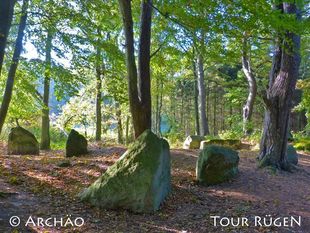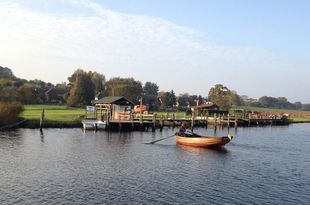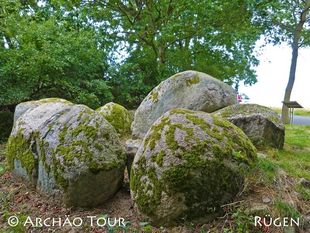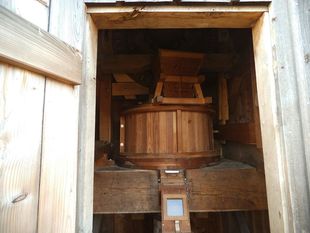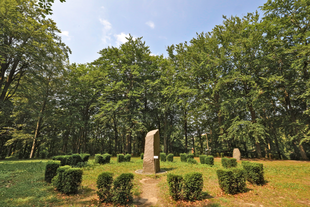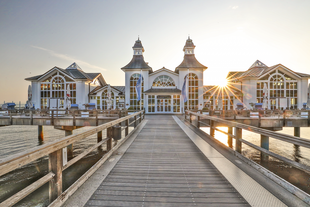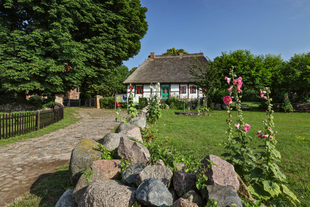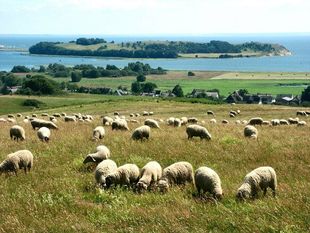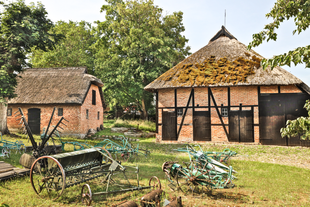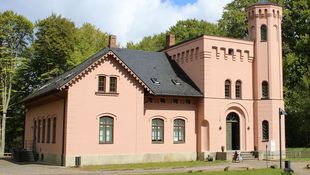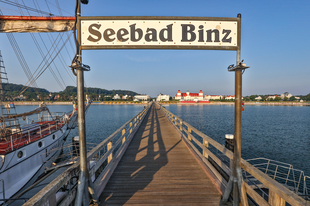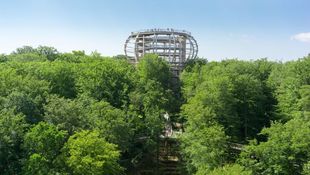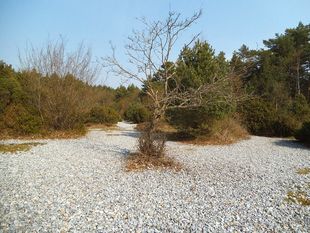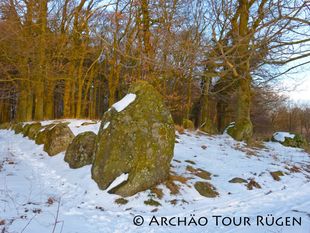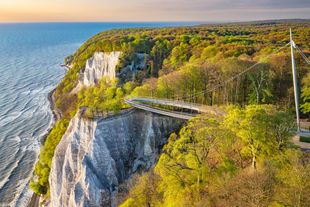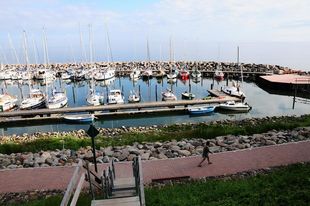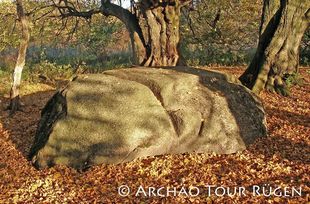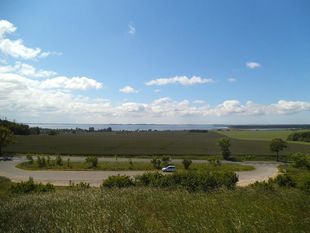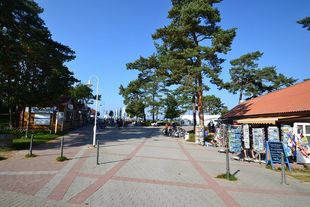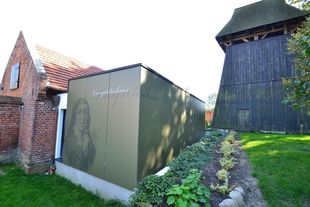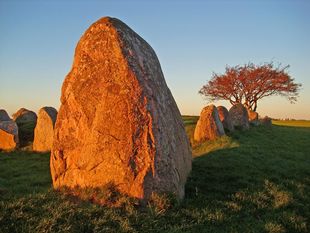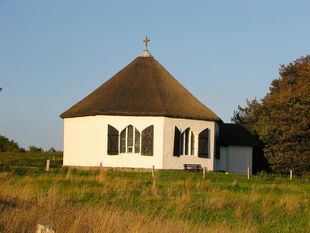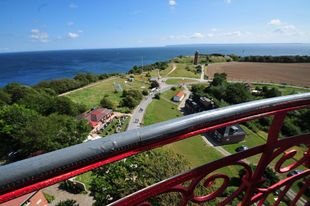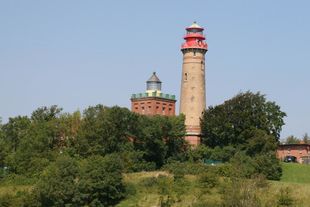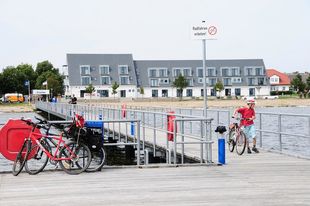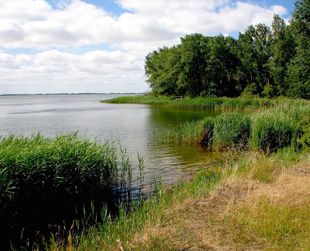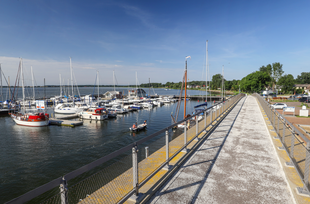Route of North German Romanticism
The Route of North German Romanticism combines places of Romantic art and literature from Wolgast via the Hanseatic towns of Greifswald and Stralsund to Kap Arkona on Rügen with today's nature experience along the West Pomeranian coast.
The themed bike route focuses on the Romantics from Vorpommern: Caspar David Friedrich, Friedrich August von Klinkowström, Karl Gottlieb Lappe and Philipp Otto Runge.
From the Rungehaus Wolgast to the resort town of Wiek on Rügen - on the altogether 286 kilometers long Route of North German Romanticism, important life and motif stations of the early Romantic painters Friedrich, Klinkowström, Runge and the poet Karl Lappe are passed. Including original locations with cultural treasures such as the ruins of Eldena Abbey, the Ludwigsburg castle, the parsonage Wusterhusen or the Lake in Wreechen, Göhren South Beach and the KÖNIGSSTUHL National Park Centre. Mostly following the Baltic Coast Cycle Route (Ostseeküsten-Radweg), the "Route of North German Romanticism" signpost leads along all seven stages with cultural highlights and offers a stunning view of the colourful coastline. Information boards between Wolgast and Greifswald and at Stralsund, Lake Wreechen, Sellin and Kap Arkona provide background information on the life and work of the Romantic artists and offer a selection of interesting tips on other natural and cultural highlights along the route.
The tour starts individually in Wolgast, Greifswald or Stralsund. Central and regular train connections in these cities allow for easy arrival and departure with your own bike. A variety of accommodation options, dining and cultural attractions along the route invite for relaxed stops or longer stays.
Total length: approx. 286 km
Distances of the route at a glance:
- Wolgast Rungehaus - Greifswald Ruins of Eldena: 46 km
- Greifswald Ruins of Eldena - Hanseatic city of Stralsund: 39 km
- Hanseatic city of Stralsund - Putbus: 41 km
- Putbus - Sellin East: 21 to 52 km incl. Mönchgut Peninsula
- Sellin East - Sassnitz: 29 km
- Sassnitz - Breege-Juliusruh seaside resort: 44 km
- Breege-Juliusruh seaside resort - Wiek resort: 35 km
Ferry connection:
If you want to shorten the route a little by bike, you can take the popular Rügen ferry between Stahlbrode on the mainland and Glewitz on Rügen.
Journey time: approx. 15 minutes
Current Information:
- On the coastal section Ludwigsburg - Loissin Bungalowsiedlung, near the sleeping trees, it may not be possible to use the route at times, as it can lead to break-offs, especially after storms, due to the proximity to the coast. An alternative route/detour is from Ludwigsburg via Loissin to Gahlkow.
Guide and Information
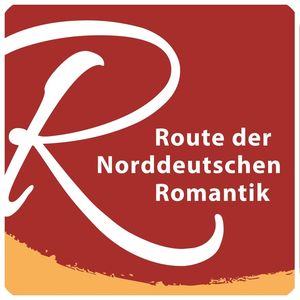
The signpost "Route of North German Romanticism" leads along all locations of the route. Information boards at the designated stations document art-historical contents and provide insights into the homeland of Romanticism.
>>> Online Flyer English for stage 1
>>> Online Flyer Polish for stage 1
>>> Stages 2 to 7 available from January 2025.
>>> to the GPS track on Komoot
Route of North German Romanticism
Stations and places along the route

Tourist Information Wolgast
Located at the Baltic Sea coast bike path and the 'Jakobsweg' as well as at the E9. Pleasure craft and yacht harbour in the city center. Accommodation service for Wolgast, Island of Usedom and Western Pomerania, true to scale bike and hike maps, ticket pre-sale for Wolgast, Island of Usedom and in all of Germany, UBB agency with sale of day tours and adventure trips.

Historic Town Hall Wolgast
The historic town hall forms the core of Wolgast old town on a medieval groundplan. In the town hall the tourist information Wolgast is located downstairs.

Museum Rungehaus
The museum Rungehaus is the birth house of the painter and romantic artist Philipp Otto Runge (1777-1810). Alongside Caspar David Friedrich, he is regarded as one of the most important painters and graphic artists of the German Romantic period.

City Harbour Wolgast
The city harbour of Wolgast spreads an impressive maritime flair and is part of the "Route of the North German Romanticism." . Passenger ships set off on excursions into the backwater and to the Bay of Greifswald. The sailing ship "Weisse Düne" invites guests for a trip. A sensational view to the Petrikirche and the city centre is offered to the viewer. The imposing bascule bridge to the island of Usedom and the Peene shipyard characterise the town on the Peene river.

The Dreilindengrund in Wolgast
Located on the Peenestrom in the district Tannenkamp in Wolgast you drive on the route of North German Romanticism along the Dreilindengrund. This translates to: The Ground of three limetrees. The name was given to it from the landing stage at the transfer of the fallen Swedish king Gustav II Adolf in 1633 during the Thirty Years' War. In memory of him three lime trees were planted. The small forest nearby was named Gustav-Adolf-Schlucht.

Fishing Harbor Freest
The fishing village Freest is located directly at the mouth of the Peene River to the Bay of Greifswalder and is home to the largest fishing port in Mecklennburg-Vorpommern (MV). Every 5th fish in MV is caught here, mostly herring, flounder and cod. Also the oldest smokehouse in Vorpommern is located near the harbour. From May to October guests can take the ferry to the island of Usedom, Peenemünde, every hour from May to October. Bicycle transport is also possible.

Beach Freest
The beach is perfectly suited for a sunbath, has a child-friendly shore and a small playground. Dogs are not allowed.

Museum of Local History Freest
The small museum hosts a collection of many different commodities, which were used in the daily life of the local fishermen and farmers. The exhibition hall was carefully arranged by the village’s residents. Special attractions are the famous traditional carpets of Freest.

Constant Exhibition of the Poet Karl Gottlieb Lappe in Wusterhusen near Lubmin
Karl Gottlieb Lappe - a nearly forgotten Poet (1773-1843). A constant exhibition in Wusterhusen, close to the beach Resort Lubmin, is located in the rectory of Wusterhusen's church. Here, the life and works of the poet Karl Lappe is documented and readings bring the poet's achievements closer. Wusterhusen is one of the stations of the "Route of North German Romanticism".

Village church Wusterhusen
The village church Wusterhusen in Western Pomerania is originally from the 13th century.

Seaside Resort of Lubmin
The peaceful seaside resort of Lubmin with its 350 m long pier, a wide child-friendly sandy beach and picturesque and quaint pine forests is perfect for a family holiday. Lubmin is one of the stations of the "Route of North German Romanticism".

The "Teufelsstein" in Lubmin
The “Teufelsstein”, which translates to “Devil’s Stone”, is a boulder in the Greifswalder Bodden near Lubmin. As late as 1909 it was above the cliff. It serves as a benchmark for surveying the coastal decline. It is a popular photo opportunity on a hike along the cliff coast to Vierow and on the high shore back to the seaside resort of Lubmin.

Natural Beach Vierow
Not far from the small industrial port of Vierow and about 2 km from the village of Vierow, you can reach the natural beach Vierow on a hiking and cycling path. Lined by small and large stones and protected by a cliff about 1 to 3 meters high, the southern coast of Rügen with Zudar and peninsula Mönchgut in sight. Already Caspar-David Friedrich looked from here to the island of Rügen and drew “Fischerboote am Strand”.

Ludwigsburg Natural Beach
Ludwigsburg beach is a popular destination for holidaymakers and locals. On hot summer days you can relax in a shady spot under the pine trees of the coastal forest or enjoy the rustic food and drink in a local inn. The homemade cakes are highly recommended.Kiters and surfers will love the beach and the shallow water of the Danish Wiek and the Bay of Greifswald.

Ludwigsburg Palace
The Renaissance palace Ludwigsburg was built between 1577 and 1592 as a widow's seat for Hedwig Sophie von Pommern-Wolgast. After her death in 1631 the palace changed hands several times until it was sold to the Greifswald merchant Weissenborn in 1810.

Village church Kemnitz
The village church in Kemnitz looks back on a long tradition. In the rectory, right next to the church is a small exhibition of the painter Friedrich August von Klinkowström.The theme cycle path "Route of North German Romanticism", which runs from Greifswald to Wolgast, leads to the places of this painter of the romantic period.

Eldena monastery ruins
The monastery ruins and park are a popular excursion destination for Greifswald residents and their guests. The monastery ruins are also the starting and finishing point of the themed cycle path "Route of North German Romanticism", which traces the stations and lives of the North German Romantics of Western Pomerania.

Caspar David Friedrich Center
The Caspar-David-Friedrich-Zentrum, opened in 2004 in the historic Seifensiederei and expanded in 2011 to include the entire former residential and commercial building of the Friedrich family, commemorates the great painter and greatest son of the city of Greifswald. It is also a museum, documentation and research center. Caspar David Friedrich was born here on September 5, 1774.

Pomeranian State Museum
14,000 years of eventful history on the southern Baltic coast on both sides of the Oder are presented between the former Franciscan church and the city wall - in an award-winning ensemble of buildings that impressively combines Gothic, classicist and contemporary architecture. The valuable collection of paintings presents works by renowned painters such as Caspar David Friedrich, Frans Hals, Philipp Otto Runge, Max Liebermann, Max Pechstein and Vincent van Gogh.

St. Mary's Church Greifswald
St. Mary's Church is a parish church in the middle of Greifswald's old town. St. Mary's Church can be visited after the Sunday service until 1 pm. The following opening hours apply in June, July and August: Monday to Friday from 10 am to 6 pm and Saturday 11 am to 3 pm. You can register for guided tours of the church at the church office or in the church.

Caspar-David-Friedrich-View
The view that Caspar David Friedrich captured in "Meadows near Greifswald" around 1820 remains almost unchanged to this day. The painting with the silhouette of the Hanseatic city behind lush green pastures hangs in the Hamburg Kunsthalle - but the original scene as Caspar David Friedrich saw it can be recreated here in the middle of nature.

Harbour Stahlbrode
The port of Stahlbrode is located on the west bank of the Strelasund. The harbour has two harbour basins with over 60 berths. The facilities of the northern harbour were modernised in 1997. A car ferry connects the mainland with the island of Rügen (ferry Stahlbrode - Glewitz)

Rügen Bridge
B 96 , 18439 Stralsund

SEA MUSEUM Stralsund
The MEERESMUSEUM in Stralsund's old town is currently closed. The museum is expected to open in 2024 after extensive modernization work.

Church St. Nikolai Stralsund
The oldest of the three parish churches is the monumental St. Nikolai church, located at the old marketplace. With its two impressive organs, made by Buchholz and Schuke, the church belongs to the most beautiful sacral building in northern Europe.

OZEANEUM Stralsund
With its five exhibitions and 46 aquariums, the OZEANEUM Stralsund invites you on an extraordinary underwater journey beneath the northern seas. Visit Humboldt penguins on the roof terrace, "Niki" the female sand tiger shark in the 2.6-million-litre pool "Open Atlantic" and the giants of the sea - real life replicas of whales.

Museum house Stralsund
Mönchstraße 38, 18439 Stralsund

Stralsund City Hall
The building, erected in the style of North German brick Gothic, whose construction dates back to the years 1300-1310, is one of the most important secular buildings on the Baltic coast. Above the large windows of the market front of the town hall, the coats of arms of the neighboring Hanseatic cities point to the importance of the Hanseatic League for Stralsund. The display gable is unique in the Baltic region.

Dänholm Island
, 18439 Stralsund

Naval museum Stralsund
The naval museum is located on the peninsula Dänholm.

Village church Gustow
Gustow Church is a brick church from the 13th century and a popular destination.

Ernst Moritz Arndt House
The place owes its special fame to the university professor, writer and publicist Ernst Moritz Arndt (1769 - 1860), who was born here.

Ernst Moritz Arndt Museum
The Ernst Moritz Arndt Museum is the oldest museum on the Island of Rügen.

Big stone graves near Neukamp
The Krakvitz megalithic tombs include the "Teetsbusch" and the "Hexenbusch".

Putbus castle park
Although Putbus Castle, the former manorial seat of the Princes of Putbus, was razed to the ground as early as 1962, the beautiful castle park is still a reminder of this magnificent time. Magnolias and sequoias adorn the garden, which is laid out in English style.

Circus Putbus
The name Putbus is probably of Slavic origin and translates as "behind the lilac bush". In 1810 this place was developed by Prince Malte to a residence town in classicistic style with theater, pedagogy and white houses around the circus. A city from the drawing board with park and animal enclosure and rosebushes in front of every house.

Orangery Putbus
Look at art and enjoy art in the Orangery in Putbus.

Rasender Roland - Rügen narrow-gauge railway
For more than a hundred years now, the narrow-gauge railway "Rasender Roland" has been driiving in the scenic south-east of the island of Rügen and offers a special kind of experience on the narrow gauge track.

Harbour of Lauterbach
Lauterbach municipal harbour is located on the Rügen Bay in the south-east of the island of Rügen. With the narrow-gauge railway " Racing Roland" at the Lauterbach pier, it is an ideal starting point for excursions across the island. Restaurants and cafés offer a wide range of culinary delights.

Vilm island
Vilm, Rügen's small sister island of only a few hectares, is known for its gnarled oaks and sunrises, which already captivated Caspar David Friedrich and Philipp Otto Runge. Together they wandered the island and told Goethe about its beauty in letters.

Hotel bathhouse Goor
In an absolutely quiet location, directly on the water and the biosphere reserve Southeast Ruegen, you will find here your ideal vacation hotel of the upper category with brine bath, indoor pool and spa area. Impressive is already the approach through the avenue to the colonnade of the classicist building built in 1818 ...

Path of leisure & knowledge
Let yourself be impressed by the history and development of the Goor Forest! Imposing trees, burial mounds and fantastic views of a Baltic Sea bay of the Island of Rügen will inspire you. During the hike you will immerse yourself in this magical forest by the sea, come to rest and deepen your contact with nature and yourself. This forest, which is developing into a "primeval forest", is largely in the care of the Michael Succow Foundation for the Protection of Nature.

Goat stones - megalithic tomb near Gobbin
The goat stones are part of a group of several megalithic burial sites along the coastal path between Lanchen-Granitz and Groß Stresow

Passenger ferry Moritzdorf
Ferry Moritzdorf is a passenger ferry across the Baab Bek River on the Island of Rügen.

Gold bush - megalithic tomb near Altensien
The megalithic grave "Goldbusch" is located near Altensien and close to the Sellin Lake.

Altensien mill
Once there were more than 20 mills around Sellin.

Spa park Friedensberg Sellin
The journey to the other world and a place of contemplation and silence.

Sellin pier
The Sellin pier leads almost 400 meters out to sea. Since 1998, the dream castle by the sea has once again become a landmark of the Island of Rügen. Whether in the light-flooded palm garden, which extends over two floors, or the imperial pavilion reminiscent of the twenties, you always enjoy the free view of the sea and the beach, surrounded by an eventful gastronomic ambience.

School museum Middelhagen
The school museum in Middelhagen is a museum about the history of educational development on the peninsula Mönchgut. It was opened on August 1, 1986 in the former sexton's house.

Bakenberg - Mönchgut Peninsula
The Bakenberg is with 66 meters the highest elevation on the hilly peninsula of Mönchgut and offers unique views over the landscape of the Mönchgut to the island of Vilm.

Göhren Museum Farm
The Mönchgut Museum Farm is the oldest and largest open-air museum on Rügen. While the residential building was built around 1850, the core of the half-timbered barn dates back to around 1680, making it one of the oldest buildings on Rügen.

The “Granitzhaus“ and exhibition
Since 2004, the former forester’s and guest house of the “Fürsten zu Putbus“ houses a visitor centre about the UNESCO biosphere reserve “Südost-Rügen“.

Pier Binz
The Binz pier on the Island of Rügen, with a length of 370 meters, is the second longest pier on Rügen after the Sellin pier.

Documentation Center Prora
The Prora Documentation Center provides information about the history of Prora and shows "MACHTUrlaub", the only permanent exhibition in Germany on the labor and social history of the "Third Reich".

Natural Heritage Centre Rügen (Naturerbe Zentrum Rügen)
The Natural Heritage Centre Rügen with treetop path and experience exhibition is open 364 days a year so that you can experience and get to know nature all year round.

Flint fields in the nature reserve Schmale Heide
North of the Baltic resort Binz, between Prora and Mukran, the flint fields are located in the nature reserve of the Schmalen Heide.

Dwasieden megalithic tomb
The Dwasiedener Hünengrab near the Hochuferweg near Sassnitz is particularly imposing with a length of 35 m, two very large guard stones and a well-preserved trapezoidal mound bed surrounding the burial chamber in the form of enclosing stones.

KÖNIGSSTUHL National Park Center
Right next to the famous Königsstuhl chalk cliffs and the UNESCO World Heritage Old Beech Forests, the KÖNIGSSTUHL National Park Center offers a special nature experience for the whole family, whatever the weather. A world full of secrets is waiting to be discovered on 2,000 square meters of exhibition space and 28,000 square meters of outdoor area - multilingual and barrier-free.

Port & water hiking resting place Lohme
The marina in Lohme on the island of Rügen is an idyllic little harbor with a view of Cape Arkona.

Quoltitz sacrificial stone
North of the village of Neddesitz on the island of Rügen is the sacrificial stone Quoltitz, which was first described in 1797 and also already recorded in a drawing by none other than the romantic painter Caspar David Friedrich.

Viewpoint Temple Mount Bobbin
One of the most beautiful viewpoints over the Jasmund Bodden and to the Wittow peninsula.

Beach promenade & spa square Glowe
Stroll along the kilometer-long beach promenade and then enjoy a cool drink on the spa square in the heart of Glowe.

Kosegarten House Altenkirchen
The shore sermons of the Altenkirchen pastor Kosegarten (1758 - 1818) are legendary. The life of Ludwig Gotthard Kosegarten is honored in a permanent exhibition in the Kosegarten House. Many events take place in the house every year.

Nobbin megalithic tomb - "giant mountain
This impressive megalithic tomb of about 34 x 11-18 m (L x W) from the Funnel Beaker Culture (ca. 4100-2800 B.C.) is an extended dolmen with a trapezoidal mound bed, two guard stones (of a total of four), some of which are 3 m high, and two burial chambers as a special feature.

Vitt shore chapel
The octagonal shore chapel on the high bank of Vitt.

Monument Kap Arkona
The area monument Kap Arkona is one of the most popular excursion destinations on Rügen. In addition to the 45 metre high cliff, the cape is home to a whole range of sights: The castle wall of Jaromarsburg Castle is located directly at the top of the Cape. The glass dome of the restored sighting tower glistens next to it. The Schinkel tower, the large lighthouse and the bearing tower can be visited.

Cape Arkona Lighthouses
Cape Arkona's lighthouses are two sea-fires and a beacon pointing the way for seafarers on the Baltic Sea.

Dranske jetty
The jetty in Dranske on the island of Rügen.

Bug near Dranske
The westernmost headland of the Wittow peninsula on the island of Rügen is called the "Bug". The "Bug" begins south of the village of Dranske.

Wiek chalk bridge
The historic chalk bridge Wiek - landmark of the municipality and as "floating promenade" new, attractive excursion destination on the peninsula Wittow.
Click here for more romanticism in Vorpommern
Funding information
Das Projekt ist gefördert aus Mitteln der Gemeinschaftsaufgabe „Verbesserung der regionalen Wirtschaftsstruktur“ durch das Ministerium für Wirtschaft, Infrastruktur, Tourismus und Arbeit Mecklenburg-Vorpommern.

